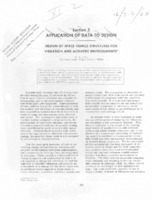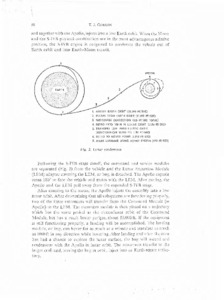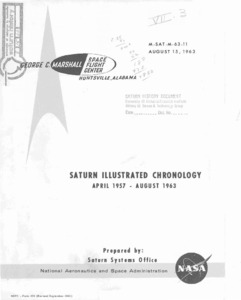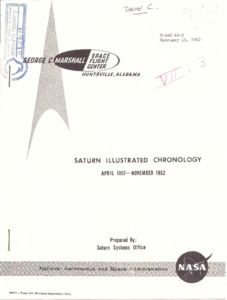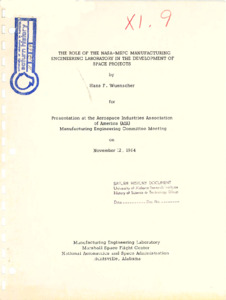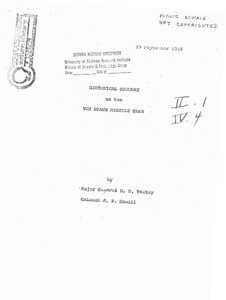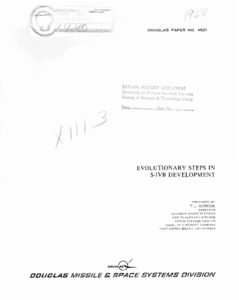
Browse Items (8 total)
Sort by:
-
"Application of Data to Design: Design of Space Vehicle Structures for Vibration and Acoustic Environments."
According to the abstract, this paper discusses the need for a uniform design approach throughout the aerospace industry for space vehicle structural vibrations in order to keep pace with improvements in environment definition and testing. -
"A survey of propulsion problems as related to space vehicle design."
Incomplete document. Displays errors in space-vehicle design as they relate to space travel. -
"Saturn illustrated chronology : April 1957 - August 1963."
A list of images with detailed descriptions of what they are and their histories. -
"Saturn illustrated chronology : April 1957 - November 1962."
Document detailing the history of the saturn project between April, 1957 through November, 1962. -
"The role of the NASA-MSFC Manufacturing Engineering Laboratory in the development of space projects."
For presentation at the Aerospace Industries Association of America (AIA) Manufacturing Engineering Committee Meeting. Discusses the role the NASA Engineering Laboratory has had on NASA projects in the form of vehicles and smaller projects. -
"Historical Summary: S & ID Apollo Program."
Four and a half years have passed since President Kennedy and the United States Congress established a national goal of landing a man on the moon, before the end of the decade. This brief history is designed to be a working tool for use during the second half of this great adventure. It is expected that by presenting the events of the past in perspective this document will become a handy reference to accomplishments of the first half of the program. It is hoped that this volume will be of value to those directly and indirectly concerned with North American's portion of the Apollo program. This history contains a chronology of significant events, as well as material on the management of the program, a record of some of the breakthroughs in technology, a report of the hardware produced to date, and the many tests performed to man-rate the equipment. -
"Evolutionary Steps in S-IVB Development."
The injection stage of a multistage launch vehicle must be partially a velocity stage and partially a spacecraft; it must not only boost the payload, it must also perform cooperative mission operations with the payload after orbital insertion. These hybrid requirements result in intrinsic stage versatility which permits consideration of new and challenging missions for the stage which were unanticipated during initial design.; Prepared by T. J. Gordon, Director, Advance Space Stations and Planetary Systems, Space Systems Center, Douglas Aircraft Company, Huntington Beach, California.

